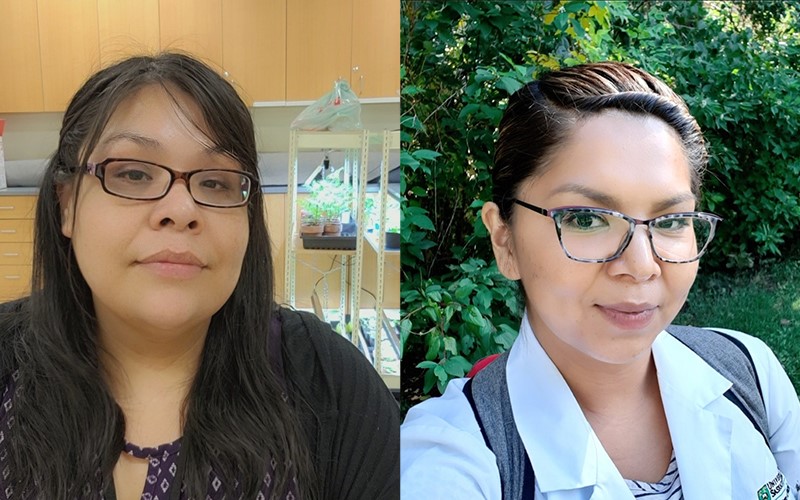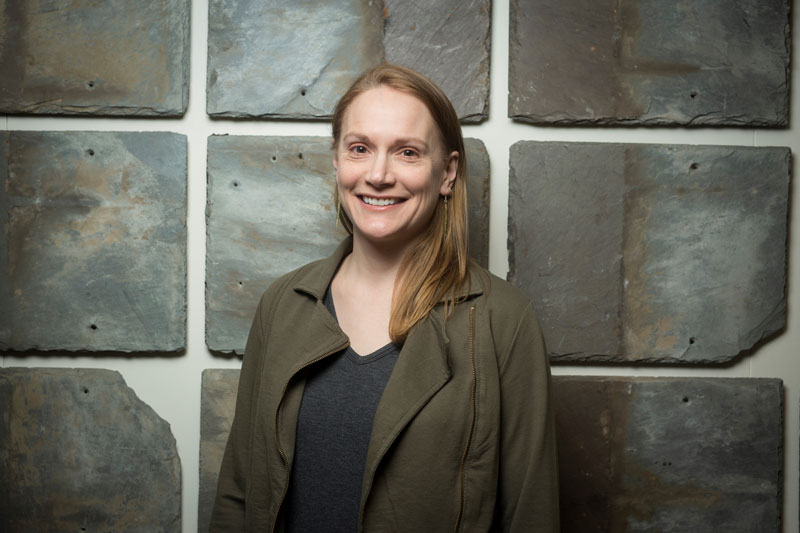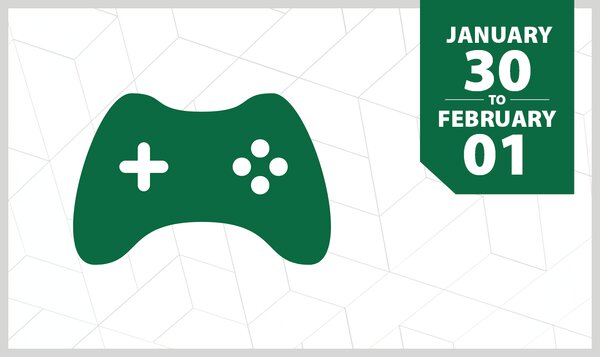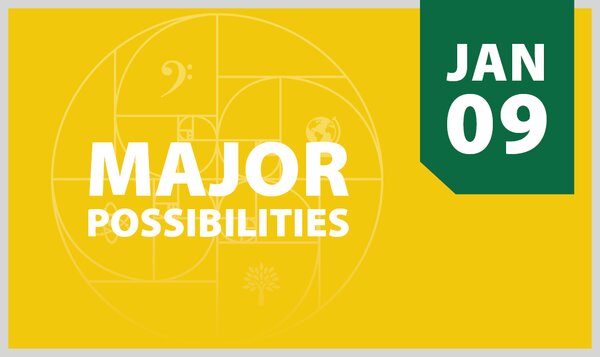
‘The environment is supportive and constant’: USask students praise ISAP, STEM Accelerator courses
Indigenous Student Achievement Pathways began offering preparatory non-degree credit science courses in 2017 to Indigenous students entering first-year university under-prepared for 100-level science courses
By Shannon Boklaschuk
University of Saskatchewan (USask) students are lauding a series of preparatory courses available through Indigenous Student Achievement Pathways (ISAP) that are designed for students who want to pursue a degree in science or post-secondary education in a related professional college.
ISAP, housed in USask’s College of Arts and Science, began offering preparatory non-degree-credit science courses—Chemistry 90, Physics 90, Biology 90 and a developmental math lab—in 2017 to Indigenous students entering first-year university under-prepared for 100-level science courses. The three 90-level courses are part of a STEM Accelerator Certificate program, created to help broaden students’ post-secondary program options, and satisfy the 30-level (high school) science prerequisites for USask college programs.
Lisa Tourangeau, an award-winning fourth-year student in USask’s College of Nursing, enrolled in Chemistry 90 in 2017 to prepare her for Chemistry 112, a first-year university course. She hadn’t taken chemistry in high school and didn’t feel confident in her math and science skillset returning to school after an extended period of time—but then an academic advisor told her about the ISAP STEM Accelerator courses. Tourangeau enrolled in Chemistry 90 alongside 100-level courses in the ISAP Medicine Wheel Learning Community (LC).
“Chem 90 prepared me to understand the content that was delivered in Chemistry 112 and allowed me to enjoy taking university-level chemistry. I found that chemistry helped me in many ways, such as understanding cellular activity and how body systems work,” said Tourangeau, who recently received a leadership award during USask’s 2021 Indigenous Achievement Week in February.
“As well, the frequent math calculations used in chemistry (are) helpful when doing medication calculations—which I use on a daily basis in my clinical shifts,” she added. “I would not be in my fourth-year nursing program today had I not enrolled in Chem 90.”
Tourangeau said she “would definitely recommend” the STEM Accelerator courses and ISAP LCs to new students or to mature learners.
“I found the smaller groups of students facilitated one-on-one learning experiences and allowed for more time to seek help when needed,” she said. “Whether it be a refresher or the first time partaking in the STEM programs, it definitely increases your chance of success in building a strong foundation for university-level courses.”
Janice Osecap, an aspiring science educator and award-winning student in the Indian Teacher Education Program (ITEP) in USask’s College of Education, also enrolled in STEM Accelerator courses alongside ISAP Medicine Wheel LC courses in 2017.
Since then, Osecap has worked with the Canadian Light Source (CLS) via the MentorSTEP program to support science, technology, engineering, and mathematics (STEM) outreach to Indigenous teachers through CLS programming. She has also volunteered as an ISAP peer mentor and has been active with the USASK.caISES student group, which focuses on Indigenous science and engineering access and excellence.
Osecap said it can be “daunting” to come to USask and to not know anyone—or only know a few people—on campus. For her, getting involved with ISAP “turned out to be a great decision.”
“I got all the classes I needed, and they all fit in a balanced schedule that was not too heavy, as well as a chance to get that credit I needed. I did not have to look for alternatives, or other ways to get my chemistry credit, from an external service,” she said. “Through the Medicine Wheel LC, I was also in classes that allowed me the opportunity to engage in discussions—something that is not easily accommodated in larger lecture halls.”
Osecap said ISAP enabled her to connect with like-minded individuals and offered her opportunities to develop her professional resume. Through ISAP programming, Osecap was also able to network and to meet professionals who helped contribute to her growth at USask. She said she recommends the STEM Accelerator Certificate and ISAP to other students “who really want to make the most of their university experience.”
“The environment is supportive and constant; when a student feels they belong, they are more inclined to ensure they are attending classes. The opportunities it continues to offer, even after transferring colleges, is appreciated,” she said.

Since the STEM Accelerator Certificate was created in 2017, more than 100 students have benefited from a strong start to post-secondary STEM studies with seats in Chemistry 90, Physics 90 and Biology 90.
Dr. Sandy Bonny (PhD), ISAP and STEM Pathways team lead in the College of Arts and Science, said the courses were developed in partnership with the departments of chemistry, physics and engineering physics and biology in response to inequitable access to face-to-face instruction of senior science electives for Indigenous learners attending northern and First Nations-operated schools, and in response to the Truth and Reconciliation Commission of Canada’s calls to action for post-secondary institutions to broaden access for Indigenous learners.
“By offering access to Chemistry 90 and Physics 90 to Indigenous Grade 12 graduates, we are effectively tripling the number of Indigenous USask students for whom STEM studies are a viable option,” said Bonny.
“If we have capacity in the courses close to the start of term, we have also offered limited seat registration to non-Indigenous mature learners, supporting access to programs across USask’s STEM colleges,” she added.
“We know that for mature returning learners, the prep courses help to fill a skills and confidence gap and can open new directions for post-secondary and career engagement.”
In 2019, 70 per cent of incoming ISAP STEM students registered in one or more 90-level courses concurrently with their first-year university electives. In the fall of 2020, ISAP offered two parallel Learning Communities in first term: a STEM Prep LC, bringing together students registered in 90-level courses, and a Medicine Wheel 1 LC, consisting of three 100-level first-year university courses. Many students who registered in the Medicine Wheel LC also took one 90-level course.
“One interesting question we’ve asked students is, ‘If the 90-level courses weren’t there, what would you have done?’ Many students indicated that they would have attempted the 100-level university science course even while lacking prerequisites or feeling unprepared. Others would have attempted to upgrade at an online or in-person high school concurrently with taking first-year university courses, which can be challenging—especially if they have funding that requires them to take a certain number of post-secondary credits,” said Bonny.
Under Bonny’s leadership, ISAP has recently expanded its winter term STEM course offerings. Students who complete the fall STEM Accelerator LC or Medicine Wheel 1 LC can transition to either of two STEM-focused LC streams in the winter term. The Medicine Wheel 2 LC focuses on courses for health science pathways, while the Medicine Wheel 3 LC focuses on courses for natural science and engineering pathways. In 2021-22, ISAP will also offer optional seat reservations in Computer Science 140 and 141 as an addition to their LC courses.
“Our goal with ISAP’s STEM-focused programming is to broaden degree options for incoming Indigenous students,” said Bonny.
“Through the community focus of our co-curricular program, and emphasis on collaborative learning in courses and tutorials, we hope to also enrich the academic and social experience of future Indigenous leaders and build a strong Indigenous applicant pool to the diverse certificate and professional degree programs that USask offers. I hope we are helping Indigenous students to Be What the World Needs and bring those skills home to their communities in dynamic and responsive ways.”

